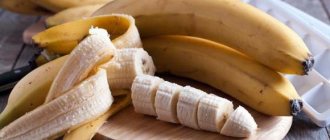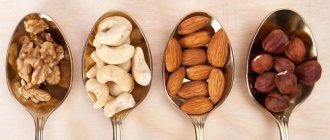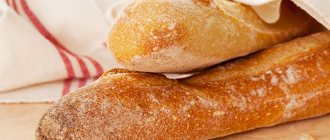Bananas are one of the most popular fruits on the planet; for example, in Ecuador, Burundi and Samoa, these fruits form the basis of the diet. Today there are approximately five hundred varieties. Most are actively used for preparing all kinds of dishes by the people of Latin America, Southeast Asia and Africa, and in other countries. Most often, these fruits are considered sweet and are eaten fresh or dried, and desserts and drinks are also prepared based on them. Sometimes you want to find out the weight of a banana both for educational purposes and for purely practical purposes.
Why do you need to know the weight?
Due to the fact that bananas grow in clusters on palm trees, they are also sold in clusters. Buyers usually purchase a bunch or two, so they only know the total weight of the entire bunch. For this reason, the weight of one banana requires certain calculations, for which you need to remember their total weight, and then divide it by the number of bananas. Sometimes this is quite problematic, which is often due to the lack of a receipt from the store.
Knowing the exact weight of one banana is often required for fruit salad and mousse recipes, where the quantity of each ingredient must be measured as accurately as possible. In addition, when following various diets, it is necessary to carefully calculate the calories consumed, and in order not to weigh the fruits every time, it is enough to know their average weight and energy value.
Energy value of dried candied fruits
Due to the fact that after drying the fruits lose water, which contains no calories (the pulp decreases in volume by about 5 times), the energy value of dried candied fruits increases. How many calories are in dried banana? 100 g of such a product, obtained industrially, contains up to 300 kcal. How many calories are in 1 piece of banana and the resulting chips? The energy value ranges from 480 to 530 kcal (due to the palm oil content used for frying). Therefore, chips cannot be recommended for weight loss diets. But dried candied fruits are acceptable, although more as an exquisite delicacy.
With peel
Most bananas that go on sale tend to be 18–20 cm long and are considered medium in size. While the length of small specimens is only 10 cm, large ones sometimes reach 30 cm.
Therefore, before visually determining the weight of the fetus, you should measure it with a ruler. If the length of the banana is more than 25 cm, then most likely the weight is 1 piece. will vary from 245 to 260 grams.
In this regard, it is generally accepted that the average weight of a large fruit with peel is approximately 250 grams.
Without peel
However, the weight of a banana with peel varies quite significantly from the weight of the peeled fruit. The banana peel is quite heavy and sometimes takes up more than 60% of the weight of the entire fruit. Because of this, the average weight of a large banana without the peel is 166 grams. But only large-fruited varieties have such a heavy peel; the skin of small and medium-sized varieties is much lighter and its weight on average is 40% of the total weight. In addition, the weight of the peel of a large banana depends on the degree of ripeness, and therefore it is generally accepted that the peel of a ripened banana takes up 55% of the weight, and that of a green banana - 60%.
Useful video
Let's take a closer look at the benefits of bananas for the body. Like any plant product, banana is rich in vitamins. It contains vitamin C, which is a strong antioxidant, strengthens the immune system and prolongs the youth of the body. And the vitamin E contained in bananas, when consumed regularly, slows down aging and gives elasticity to the skin.
How many calories are in 1 banana depends on its size. The average fruit of large-fruited varieties weighs 180–240 grams, two-fifths of which is the peel. This yields approximately 140 to 200 grams of pulp. The calorie content of a large-fruited banana is approximately 170–250 Kcal. Small dessert fruits are 12 centimeters long and weigh 100 or a little more grams. This “baby” without the peel will give you a maximum of 100 Kcal.
Regular banana
The average fruit is 20 cm long and weighs about 200 grams with the peel. The skin of a ripe banana weighs approximately 80 grams, which is 40% of the total weight of the fruit. In this regard, it is generally accepted that the average weight of one banana without skin is 120 grams.
However, if the fruit is unripe, then its peel can weigh 100 grams, which is exactly half of the total weight.
Small bananas usually weigh no more than 100 grams. Such fruits are distinguished by thinner and lighter skin, the weight of which does not exceed 30% of the total weight. Thus, a peeled mini banana weighs on average 70 grams, and the weight of its skin varies from 25 to 35 grams.
By the way, the skins of small fruits are often used as fertilizer for indoor and greenhouse plants. This is due to its high content of nutrients and microelements, as well as its rapid decomposition in the ground.
Glycemic index
The glycemic index (GI) reflects the effect of food entering the human body on blood glucose levels. The GI scale is measured in numbers, of which 0 are products without carbohydrates, and 100 are those with the maximum content of carbohydrates (or the so-called “pure glucose”). A high GI in terms of calories should not be perceived unambiguously negatively: such products release energy faster. Low glycemic index (low calorie) foods contain fiber that are digested slowly by the body without causing an increase in blood sugar.
Of course, the constant consumption of foods with a high GI against the background of little physical activity can cause various types of disorders, for example, body fat or diabetes. When it comes to how many calories are in a banana and how that relates to the glycemic index, the ripeness of the fruit comes into play.
How much pulp is in a kilogram of bananas?
After the average weight of a banana has been calculated and taken as a constant value, it is not difficult to find out the mass of pulp in 1 kg of unpeeled fruit. To do this, you must first measure the largest banana from the bunch, and then determine the degree of ripeness of the fruit. Based on all this, it is easy to calculate the weight of the skin as a percentage. For example, for fully ripe large bananas this figure will be 55%. Therefore, one kilogram of ripe large fruits contains 450 grams of juicy pulp. While for green bananas this ratio will look like 600/400, where 600 is the weight of the skin, and 400 is the weight of the pulp in grams.
How many vitamins are in a banana?
Banana pulp contains vitamins necessary for the normal functioning of the human body:
- vitamin C is a strong antioxidant that helps slow down the aging process of the skin and increase the body's resistance to various infectious diseases;
- B vitamins smooth out PMS symptoms and have a beneficial effect on the nervous system;
- Vitamin E prolongs the active activity of skin cells - it becomes elastic, firm and smooth;
- carotene will protect the body from cancer and cardiovascular diseases, and prevent premature aging of the body.
| Vitamins | Content in mg |
| 0,015 | |
| 0,04-0,5 | |
| 0,05-0,07 | |
| 0,5-1 | |
| 0,2 | |
| 18 | |
| 5,6-36 | |
| 0,3 |
Calorie content
Banana pulp is rich in vitamins and microelements, including a high proportion of substances beneficial to the body such as potassium and magnesium. Ripe bananas contain the most nutritional components. They can be distinguished by their bright yellow color and the presence of dark spots on the skin. The calorie content of a ripe medium-sized fruit is only 90 kcal, while for a green one this figure is 120 kcal.
This property must be taken into account when preparing banana diets for weight loss, purchasing only ripe fruits for dietary nutrition.
The calorie content of large, fully ripened fruits reaches 144 kcal. While for average people this figure varies depending on weight, amounting to 140 kcal for a fetus weighing 250 grams and about 86 kcal for a fetus weighing 150 grams. For mini-bananas, the energy value also depends on the degree of ripening and reaches 90 kcal for unripe fruits, and 75-80 kcal for ripe ones. However, the leader in weight loss diets is the low-calorie variety of green bananas “Platano”.
The variety differs from other types in the minimal amount of sugar, sweet and sour, slightly tart taste and low energy value, amounting to only 60 kcal.
The nutritional value of an average banana is as follows: proteins - 1.4 g, fats - 0.4 g, carbohydrates - 22 g. As for the chemical composition, 100 grams of the product contains 0.6 mg of iron, 0.27 mg of manganese, 1 μg of selenium, 2.2 μg of fluorine and 0.15 mg of zinc. Due to their optimal calorie and nutritional values, bananas can be used in various weight loss diets, as well as as a means to cleanse the body.
The only condition for their correct use is the time of intake: the fruits must be eaten before noon, otherwise the potassium will not have time to be absorbed by the body during the day and will create unnecessary stress on the heart.
Thus, in order to find out the weight of one banana, it is not necessary to use a scale. Due to the morphological properties of plants, mature fruits have similar length and weight indicators, so a small error is often neglected and the average weight of one fruit is taken as a conditionally constant value.
Banana diet for weight loss
Nutritionists are unanimous in their opinion that the average calorie content of 1 piece of banana for weight loss has a positive effect when taken. Moreover, such a calorie diet is suitable for both infants (8 months old) and the elderly.
The usual opinion that a banana is not suitable for a diet due to its calories is not supported by experts. After all, actual calculations of how many calories are in 100 grams of banana refute the idea that the product is high in calories. If you know how many calories are in 1 medium banana and how many fruits you need to eat per day to satisfy your hunger, then including this product in your diet will not lead to weight gain.
Finally, we note that the banana diet is not only healthy, but also nutritious. Due to the content of necessary elements during such a diet, the body does not need additional doping. Also, a person does not experience an acute feeling of hunger. The fruit is easily absorbed and digested, bringing satiety.
How much does a peeled banana weigh and the weight of a banana with peel?
In nature, there are about 400 species and hybrid varieties of bananas. But not all of them are suitable for use. Inedible varieties are used primarily for making paper products, bags, and decorative items. Fruits of dessert varieties are exported, which are always available on markets and supermarket shelves. Few buyers thought about how much one banana weighs. Let's try to understand this issue in more detail.
Weight of 1 banana
All bananas that can only be seen on store shelves should be conditionally divided according to parameters into three categories:
• small – length varies from 9 to 12 cm;
• medium – diameter 3-4 cm, length – 16-20 cm;
• large – length 25-30 cm with a diameter of 4-5 cm.

If the household has table scales, then all ingredients are simply weighed before adding. If this device is not available, you should not despair; you can determine the approximate weight of the fetus visually. To simplify calculations, the average options are always taken as a basis, and so is the case with bananas. The average exotic weighs 146-149 grams. This figure is rounded to 150 grams, and it is rational to use it to determine the weight of the pulp and peel separately.
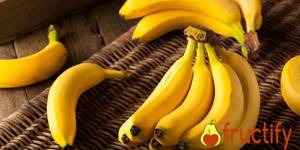
Is there starch in banana fruit?
Many people are interested in the question of whether there is starch in bananas. Starch appears during the ripening stage. But as the fruit ripens, the starch content decreases and it is converted into sugar. If we consider the process of starch formation, it can be divided into three stages:
- In unripe fruit, starch is clearly visible, which can cause gas formation when consumed.
- There is practically no starch in a ripe fruit; it is converted into sugar. Therefore, the fruit is safe and perfectly absorbed by the body.
- The starch content in stale fruit is also insignificant. But provided that the fruit has passed the stage of ripening and has not rotted, being unripe.
Calorie content
If the pulp of a medium-sized banana weighs 100 grams, then it becomes easier to determine its calorie content. The indicator is 96 kcal, of which 1.5 g is allocated to proteins, 0.5 g to fats, 21 g to carbohydrates .
Calorie content can be determined in a similar way for large and small fruits. But first you need to calculate how many medium-sized bananas are in 1 kg. Dividing 1000 g by 150 g, we get 6.6666. With rounding, we can say that a kilogram consists of six to seven exotic medium-sized fruits. If 3-4 pieces are purchased per 1 kg, then the size of the bananas is considered large. Conversely, more than 7 pieces in 1 kg means that the fruit belongs to small varieties, and accordingly their weight will be less than 150 grams.
Nutritional value of bananas (BJU)
In dietetics, one of the most important characteristics of the nutritional value of products is their ability to saturate the body with energy. It is determined by the amount of energy that a person receives when releasing food components during the process of digestion and assimilation. The abbreviation BZHU, or nutritional value, consists of three main elements, the content of which determines the energy value of the product. These are proteins-fats-carbohydrates.
The basis for calculating BZHU is 100 g of product (packaged or individually). In addition to the three elements, the energy value of the products is indicated in kJ, where 1 kcal is equal to 4.16 kJ, and also in kcal. Based on the BZHU, the daily calorie intake required for normal functioning and active human activity is calculated.
If we talk about banana BJU, then 100 g of ripe fruit pulp contains:
- proteins - 1.5 g;
- fat - 0.1 g;
- carbohydrates - 21.8 g;
- dietary fiber - 1.7 g.
As a percentage of the caloric content of a banana in 1 piece - proteins, fats, carbohydrates:
- proteins - 1.5%;
- fats - 0.5%;
- carbohydrates - up to 30%.
In addition to the importance of the question of how many kilocalories are in a banana, we also note the presence of 42 mg of magnesium and about 350 mg of potassium. Thanks to the combination of these elements, fruits quickly restore energy and vitality as a snack between meals. Considering the average calorie content in 1 piece of banana, it should be noted that it is able to compensate for the daily requirement of magnesium and potassium. Which, in turn, can be used to prevent myocardial infarction.
Another 100 g contains:
- vitamin A, provitamin A - approximately 2% of the daily requirement;
- beta-carotene is found more in red platano varieties, that is, vegetable varieties of the fruit;
- B vitamins, very important for muscle function, cholesterol removal and preventing the development of diabetes;
- vitamin C - about 11% of the daily requirement;
- vitamins E, PP;
- manganese - 14% of daily intake, important for immunity and good mood;
- the amino acid tryptophan, used by the body in the production of serotonin;
- zinc, selenium, fluorine, iron.
Banana weight without peel
If someone still thinks that the weight of a banana with and without peel is not significantly different, then it is worth familiarizing yourself with the statistical indicators. They indicate that the weight of the peel is approximately 40% of the total weight of the fruit. This means that, without taking this fact into account, you can make a mistake with the proportion of banana in the recipe by almost half.

Is it possible to eat at night?
It's amazing how a simple question still generates a lot of controversy. Proponents of a healthy diet do not recommend eating anything at all after 18.00. Fans of eating a banana breakfast in the morning claim that it gives them energy. On the other hand, young mothers are happy to give a banana to their babies before bed. This, they say, replaces higher-calorie porridge.
For people suffering from insomnia, the fruit is recommended an hour before going to bed because of its ability to normalize the emotional background and calm the nervous system. Let's leave the final choice to the consumer of this healthy and easily digestible fruit.
How much pulp is in 1 kg of bananas?
Considering the weight of an average banana, you can calculate the mass of pulp from purchased 1 kg of fruit. Subtracting 40% for the peel, you get about 600 grams of a nutritious product. This indicator should be taken into account when drawing up a dietary menu or preparing culinary dishes.
Having information about how much a banana weighs in its peeled form and with its peel, you can more accurately control the caloric content of your diet and calculate the amount of consumed vitamins and beneficial microelements contained in the pulp of the fruit.
Do bananas make you fat?
In fact, the answer is not so clear, even if we take into account the high calorie content of this herbal berry. There is an opinion that due to the high carbohydrate content, you can gain weight from bananas - indeed, a fruit rich in carbohydrates quickly causes a feeling of fullness, however, if you do not eat kilograms of bananas day after day, extra pounds are unlikely to form.
The myth that bananas make you fat is based on the very high calorie content of the product, but it should be taken into account that in addition to the presence of 110–150 kcal in an average banana, it is valuable in other easily digestible substances:
- minerals and vitamins;
- quickly “burn out” in the body and give a boost of energy for the whole day with glucose, sucrose and fructose;
- malic acid and special enzymes, invaluable for the absorption of carbohydrates.
With a rationally structured diet, you will not be able to gain weight from bananas. In addition, this particular berry of herbaceous origin is approved by nutritionists for chronic gastritis and stomach ulcers.
How much does a banana weigh - with and without peel, the weight of the skin and the weight of a box of bananas
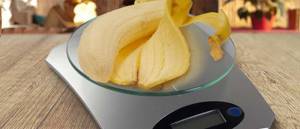
Bananas are one of the most popular fruits on the planet; for example, in Ecuador, Burundi and Samoa, these fruits form the basis of the diet. Today there are approximately five hundred varieties. Most are actively used for preparing all kinds of dishes by the people of Latin America, Southeast Asia and Africa, and in other countries. Most often, these fruits are considered sweet and are eaten fresh or dried, and desserts and drinks are also prepared based on them. Sometimes you want to find out the weight of a banana both for educational purposes and for purely practical purposes.
Why do you need to know the weight?
The mass of a banana is interesting from a practical point of view, and for different areas of life at once:
- Health - “mono” or complex fruit diets imply calculating the calorie content of each product, which is impossible without knowing the exact weight.
- Cooking - preparing desserts (mousses, salads or pastries) requires adherence to an exact recipe, which indicates the mass of each ingredient, and not its individual quantity.
- Baby food - when introducing complementary foods, young mothers are interested in the exact weight of the ingredients so that the prepared puree or porridge meets the baby’s needs.
- Beauty - skin care masks are made from banana pulp; the preparation of some of them requires the use of an exact amount.
How much does a banana weigh?
If you have scales at hand, determining how many grams are in a banana (with or without peel) is not difficult. But such a device is not present in every kitchen. It is not necessary to know the exact mass; it is enough to remember the average values, using them later as reference values. On the shelves of grocery stores you can find only dessert varieties, whose pulp has a sweet taste, and whose composition boasts a high content of carbohydrates, vitamin C, phosphorus, potassium and magnesium, for which the fruit is especially valued. The information below concerns them specifically.
The weight of the peel is about 40% of the total, so per kilogram of fruit purchased you should expect only 600 grams of pulp.
With peel
The main factor determining how much 1 banana weighs with peel will be the size of the fruit. Depending on their length, fruits are usually classified as follows:
- Small – 10 cm.
- Medium – 18-20 cm.
- Large – 25-30 cm.
Small fruits are rarely found on shelves, with the exception of mini varieties. Medium ones weigh about 140-200 grams, and large fruits weigh 240-260 grams. In order not to be mistaken in determining the type of fruit by size, it is enough to measure it with a ruler.
Without peel
It’s worth clarifying right away that banana peels are dense and quite heavy. For this reason, the weight of a banana without peel is significantly different from its original weight.
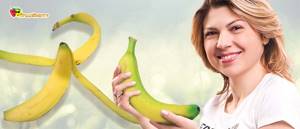
A standard fruit weighing 200 grams after peeling will have a mass of about 120 grams, and the shell will take up the remaining 80 grams. The pulp of large fruits usually weighs 166 grams.
The larger the banana, the more the peel weighs. In medium-fruited varieties, the weight is about 40% of the total, and in large ones it reaches 60%. It is also worth looking at the degree of ripeness of bananas. Mature fruits have lighter and thinner skins (35-55% of weight depending on the variety), and in green specimens the skin is much thicker and heavier (60% or more). The average weight of the pulp is 58-65% of the total mass.
The standard weight of bananas in a box is 19.5 kg. Why exactly so much? The fact is that when transporting, the multiplicity of cargo is important, and an empty banana box weighs exactly 0.5 kg. Thus, the gross weight of the box is 20 kg, which is convenient to take into account during transportation.
How many calories are in 1 banana without peel and 100 grams?
Do bananas contain calories and how many kcal (kilocalories) are in one banana?
These questions are asked by those who are planning a diet that necessarily includes various types of vegetables and fruits. Despite the fact that this fruit is considered a healthy delicacy, with a healthy diet it is recommended to carefully consider its caloric content and energy value. When calculating calories for a day, you need to know: the calorie content (energy value) of one banana without peel (skin) is 120 kcal for an average fruit. The phrase “average fruit” is key here: bananas, like other fruits, differ in varieties and growing conditions, and therefore their energy value can vary significantly.
https://www.youtube.com/watch?v=
Baby bananas, sold in attractive bunches in supermarkets, contain 80–90 kcal due to their small size. Slightly sour bananas of the rather rare, “green” variety Platano are distinguished by their low calorie content - about 60 kcal per fruit.
Of course, not everyone can handle eating the same product in its pure form every day, and there’s no need to: among people there are both real banana eaters and those who are more than indifferent to these fruits. The banana menu can be diversified by adding cottage cheese casseroles, kefir, yogurt or regular cottage cheese - the calorie content is calculated as the sum of the kcal components of the products:
- banana with yogurt – 135 kcal;
- kefir with banana puree – 60 kcal;
- cottage cheese with banana – 190 kcal;
- but the cottage cheese and banana casserole will be much less high in calories - only 100-105 kcal.

Banana is a very diverse berry, which is good both in its pure form and with cocoa or sour-milk products. Many people prefer these fruits in dried form as a nutritious snack, believing that this form is healthier for the body. However, a dried (dried) banana product is still a “fruit”: its calorie content is almost twice as high as the energy value of a fresh overripe fruit.
When calculating a dietary menu, it is necessary to take into account that the weight of an average dried banana is, for obvious reasons, lower than the weight of a fresh one and amounts to 25–35 g. One such dried fruit can satisfy hunger for several hours with a snack, but, of course, it can be used as a low-calorie dietary product for weight loss. can not.
A priori, banana chips fried in oil cannot be lower in calories than fresh fruits - and so they are: their high calorie content makes this product unsuitable for a diet menu; they contain:
- proteins – 9–10 kcal;
- fats – 300–310 kcal;
- carbohydrates – 200–205 kcal.
So, we calculate how many calories are in 100 grams. banana chips? Receives 510–525 kcal. A small bag of such a product is comparable in calorie content to a full meal.
Let's move on to another indicator of nutritional value - BZHU: the ratio of proteins, fats and carbohydrates. When drawing up a dietary menu involving banana fruits, many questions arise: does a banana contain protein, how many carbohydrates are in 1 banana and in what form should it be consumed so that it is as beneficial as possible for the body?
Composition of banana BJU per 100 grams:
- proteins – 1.5 g (6 kcal);
- fats – 0.1 mg (5 kcal);
- carbohydrates – 21.8 g (84 kcal).
An important indicator is how many grams of proteins, fats and carbohydrates are in a banana (1 piece):
- proteins – 2.5 g;
- fats – 0.2 g;
- carbohydrates – 32 g.
The data is based on the average weight of a fruit of average maturity.
To recalculate the indicators indicated per 100 g of product, you need to know how much a banana without peel weighs on average. Weight 1 pc. is 150 grams. The average unpeeled fruit weighs 200g, with the banana peel weighing approximately 50g, accounting for a quarter of the total weight. Knowing the average weight of one banana without peel is necessary when preparing complex dishes, banana cookies, desserts, cocktails, etc.
Naturally, few people buy one banana in the store - a bunch is stored longer, and the healthy product is on hand for more than one day. How many bananas are in 1 kg? Again, if we take into account the average fruit weight (200 g with peel), then there will be five of them in one kilogram.
Bananas are high-sugar foods and therefore cannot be recommended for a low-calorie diet:
- 100 bananas contain 12.23 g;
- ripe banana (1 piece) contains 12–16 g of sugar.
With proper nutrition, bananas, in turn, maintain optimal blood sugar levels, stopping attacks of uncontrolled hunger.
Based on existing standards, the ideal weight of a banana with peel is 200 grams. Therefore, if a person wants to purchase a healthy fruit, he should choose a banana of approximately this weight.
Now we can consider other parameters of banana mass. This will help satisfy your curiosity :).
- The large fruit with peel weighs about 258 grams. And although each large fruit can have a different weight, it is believed that the average size of a large fruit = 250 grams.
- An average banana, including its peel, weighs about 146 grams.
- A large banana without peel weighs 166 grams. The average weight of such bananas without peel will be approximately 150 grams.
- An average peeled banana weighs 90 grams. The average weight of a peeled banana is 100 grams.
- The peel of a large banana equals a weight of 92 to 100 grams.
- The peel of an average banana weighs between 50 and 56 grams.
Based on the above information, you can easily calculate the correct number of calories in a particular fruit. Thus, one large fruit contains about 144 kcal.
- Banana is the fourth most famous agricultural product in the world, second only to rice, millet and corn. More than one hundred billion of these fruits are eaten every year on the planet.
- Everyone knows that bananas grow on trees. But, in truth, the banana palm is an ordinary grass. And this opinion, widespread throughout the world, is due to the fact that the banana stem is very dense and tall, thereby resembling a tree structure. Banana is one of the largest herbaceous plants on Earth.
- Banana is actually a berry, not a fruit.
- Conventionally wild banana fruits contain black seeds, so they are distinguished as varietal berries.
- About 95% of all existing banana bushes currently grown come from a single bush in South Asia. This means that all private banana trees are literally cloned.
- There are currently thousands of varieties of these yellow berries, but many of them simply cannot be eaten. Only six types of this fruit are sweet and edible berries.
- The most famous variety is Cavendish. However, it is in the lead not because of its incredible deliciousness and quality, but because around the middle of the 20th century, the wonderful Gros Michel bananas, much sweeter, tasty and large, were completely wiped off the face of the Earth. The reason for this was the strange fungus “Panama disease”, which could only infect plants of this type. 60 years later, such a threat hangs over the current appearance of Cavendish.
- Almost all types of bananas are radioactive, namely they contain potassium, as well as its isotope called potassium-40.
- The extraordinary Goldfinger bananas grow in Australia. Their taste and texture are similar to apples.
- Most bananas are consumed in Uganda. Each resident produces approximately 220 kg of bananas per year.
- Bananas should be eaten before 12 days so that potassium can be absorbed by the body and benefit the heart.
PS How much animals weigh or how long insects live can be found in the appropriate sections: Animals, Insects.
In dietetics, one of the most important characteristics of the nutritional value of products is their ability to saturate the body with energy. It is determined by the amount of energy that a person receives when releasing food components during the process of digestion and assimilation. The abbreviation BZHU, or nutritional value, consists of three main elements, the content of which determines the energy value of the product. These are proteins-fats-carbohydrates.
The basis for calculating BZHU is 100 g of product (packaged or individually). In addition to the three elements, the energy value of the products is indicated in kJ, where 1 kcal is equal to 4.16 kJ, and also in kcal. Based on the BZHU, the daily calorie intake required for normal functioning and active human activity is calculated.
If we talk about banana BJU, then 100 g of ripe fruit pulp contains:
- proteins - 1.5 g;
- fat - 0.1 g;
- carbohydrates - 21.8 g;
- dietary fiber - 1.7 g.
As a percentage of the caloric content of a banana in 1 piece - proteins, fats, carbohydrates:
- proteins - 1.5%;
- fats - 0.5%;
- carbohydrates - up to 30%.
In addition to the importance of the question of how many kilocalories are in a banana, we also note the presence of 42 mg of magnesium and about 350 mg of potassium. Thanks to the combination of these elements, fruits quickly restore energy and vitality as a snack between meals. Considering the average calorie content in 1 piece of banana, it should be noted that it is able to compensate for the daily requirement of magnesium and potassium. Which, in turn, can be used to prevent myocardial infarction.
Another 100 g contains:
- vitamin A, provitamin A - approximately 2% of the daily requirement;
- beta-carotene is found more in red platano varieties, that is, vegetable varieties of the fruit;
- B vitamins, very important for muscle function, cholesterol removal and preventing the development of diabetes;
- vitamin C - about 11% of the daily requirement;
- vitamins E, PP;
- manganese - 14% of daily intake, important for immunity and good mood;
- the amino acid tryptophan, used by the body in the production of serotonin;
- zinc, selenium, fluorine, iron.
Nutritionists answer the question of how many calories are in one banana, indicating the range of values: 66-111 kcal in peeled fruit (per 100 g). The average weight of a fruit imported to Russia is 200 g with peel, and the difference in the weight of individual fruits is from 150 to 250 g. The calorie content of 1 piece of banana without peel is calculated from the average weight of 140 g, and the peel weighs, respectively, 60 g.
Now it is more or less clear how calculations are made, how many calories are in 1 piece of banana - the greater the weight, the higher the calorie content. 60-65% of the pulp of the total weight of the fruit is taken into account. This rule only applies to fresh fruit. The energy value of dried candied fruits is measured differently. The calorie content of 1 banana comes mainly from carbohydrates (about 22%).
Fresh without peel
- proteins – 1.1-1.5 grams;
- fats – 0.3-0.5 grams;
- carbohydrates – 21-23 grams.
- increased calorie content;
- the ability to remove salts from the human body and get rid of swelling;
- the presence of sugars and insulins, which prevent cravings for sweets and light carbohydrates;
- guaranteed supply of useful energy to the body;
- gentle cleansing of the intestines from waste and toxins;
- low fat content in bananas;
- a high level of protection against depression due to the production of serotonin, the hormone of joy.
In dried banana
- The large fruit with peel weighs about 258 grams. And although each large fruit can have a different weight, it is believed that the average size of a large fruit = 250 grams.
- An average banana, including its peel, weighs about 146 grams.
- A large banana without peel weighs 166 grams. The average weight of such bananas without peel will be approximately 150 grams.
- An average peeled banana weighs 90 grams. The average weight of a peeled banana is 100 grams.
- The peel of a large banana equals a weight of 92 to 100 grams.
- The peel of an average banana weighs between 50 and 56 grams.
- Banana is the fourth most famous agricultural product in the world, second only to rice, millet and corn. More than one hundred billion of these fruits are eaten every year on the planet.
- Everyone knows that bananas grow on trees. But, in truth, the banana palm is an ordinary grass. And this opinion, widespread throughout the world, is due to the fact that the banana stem is very dense and tall, thereby resembling a tree structure. Banana is one of the largest herbaceous plants on Earth.
- Banana is actually a berry, not a fruit.
- Conventionally wild banana fruits contain black seeds, so they are distinguished as varietal berries.
- About 95% of all existing banana bushes currently grown come from a single bush in South Asia. This means that all private banana trees are literally cloned.
- There are currently thousands of varieties of these yellow berries, but many of them simply cannot be eaten. Only six types of this fruit are sweet and edible berries.
- The most famous variety is Cavendish. However, it is in the lead not because of its incredible deliciousness and quality, but because around the middle of the 20th century, the wonderful Gros Michel bananas, much sweeter, tasty and large, were completely wiped off the face of the Earth. The reason for this was the strange fungus “Panama disease”, which could only infect plants of this type. 60 years later, such a threat hangs over the current appearance of Cavendish.
- Almost all types of bananas are radioactive, namely they contain potassium, as well as its isotope called potassium-40.
- The extraordinary Goldfinger bananas grow in Australia. Their taste and texture are similar to apples.
- Most bananas are consumed in Uganda. Each resident produces approximately 220 kg of bananas per year.
- Bananas should be eaten before 12 days so that potassium can be absorbed by the body and benefit the heart.
In the green Platano
- The large fruit with peel weighs about 258 grams. And although each large fruit can have a different weight, it is believed that the average size of a large fruit = 250 grams.
- An average banana, including its peel, weighs about 146 grams.
- A large banana without peel weighs 166 grams. The average weight of such bananas without peel will be approximately 150 grams.
- An average peeled banana weighs 90 grams. The average weight of a peeled banana is 100 grams.
- The peel of a large banana equals a weight of 92 to 100 grams.
- The peel of an average banana weighs between 50 and 56 grams.
- Banana is the fourth most famous agricultural product in the world, second only to rice, millet and corn. More than one hundred billion of these fruits are eaten every year on the planet.
- Everyone knows that bananas grow on trees. But, in truth, the banana palm is an ordinary grass. And this opinion, widespread throughout the world, is due to the fact that the banana stem is very dense and tall, thereby resembling a tree structure. Banana is one of the largest herbaceous plants on Earth.
- Banana is actually a berry, not a fruit.
- Conventionally wild banana fruits contain black seeds, so they are distinguished as varietal berries.
- About 95% of all existing banana bushes currently grown come from a single bush in South Asia. This means that all private banana trees are literally cloned.
- There are currently thousands of varieties of these yellow berries, but many of them simply cannot be eaten. Only six types of this fruit are sweet and edible berries.
- The most famous variety is Cavendish. However, it is in the lead not because of its incredible deliciousness and quality, but because around the middle of the 20th century, the wonderful Gros Michel bananas, much sweeter, tasty and large, were completely wiped off the face of the Earth. The reason for this was the strange fungus “Panama disease”, which could only infect plants of this type. 60 years later, such a threat hangs over the current appearance of Cavendish.
- Almost all types of bananas are radioactive, namely they contain potassium, as well as its isotope called potassium-40.
- The extraordinary Goldfinger bananas grow in Australia. Their taste and texture are similar to apples.
- Most bananas are consumed in Uganda. Each resident produces approximately 220 kg of bananas per year.
- Bananas should be eaten before 12 days so that potassium can be absorbed by the body and benefit the heart.
- In small - it differs from the variety called “mini”. To distinguish the fruit by size, a scale in cm is used - from 15 to 18 cm. How many calories are in one banana? Approximately 90 kcal.
- How many calories are in an average banana 18 to 20 cm long? This is the most common type of imported fruit. Its energy value reaches 111 kcal.
- In large ones - more than 20 cm long, the caloric value reaches 160 kcal.
- A mini banana is less than 15 cm long and has an energy value of 72 kcal. This is a special variety that can be found in abundance in markets in Thailand, India, and Burma. A cluster with dense fruit growth is characteristic.
- Banana is the fourth most famous agricultural product in the world, second only to rice, millet and corn. More than one hundred billion of these fruits are eaten every year on the planet.
- Everyone knows that bananas grow on trees. But, in truth, the banana palm is an ordinary grass. And this opinion, widespread throughout the world, is due to the fact that the banana stem is very dense and tall, thereby resembling a tree structure. Banana is one of the largest herbaceous plants on Earth.
- Banana is actually a berry, not a fruit.
- Conventionally wild banana fruits contain black seeds, so they are distinguished as varietal berries.
- About 95% of all existing banana bushes currently grown come from a single bush in South Asia. This means that all private banana trees are literally cloned.
- There are currently thousands of varieties of these yellow berries, but many of them simply cannot be eaten. Only six types of this fruit are sweet and edible berries.
- The most famous variety is Cavendish. However, it is in the lead not because of its incredible deliciousness and quality, but because around the middle of the 20th century, the wonderful Gros Michel bananas, much sweeter, tasty and large, were completely wiped off the face of the Earth. The reason for this was the strange fungus “Panama disease”, which could only infect plants of this type. 60 years later, such a threat hangs over the current appearance of Cavendish.
- Almost all types of bananas are radioactive, namely they contain potassium, as well as its isotope called potassium-40.
- The extraordinary Goldfinger bananas grow in Australia. Their taste and texture are similar to apples.
- Most bananas are consumed in Uganda. Each resident produces approximately 220 kg of bananas per year.
- Bananas should be eaten before 12 days so that potassium can be absorbed by the body and benefit the heart.
